Seppo guide
On this page
Advanced task settings
Advanced task settings
In the Task settings > Advanced section, instructors can configure additional gamification functionalities to a task.
These include:
Flash task
Send picture
Automatically award badge
Time limit
Code lock
Pin icon
GPS lock (only in live map games)
Hidden task (only in 360-degree image games)
1. Flash task
A flash task is a task that can be activated to turn on for all players simultaneously. After activation, all players must complete the flash task before continuing with the rest of the game. It’s a great way of setting off a sense of urgency and focus to all the game’s participants.
After the flash task setting is toggled on in the Advanced settings and the changes are saved, the task moves to its own “Flash” section in the Build – Tasks tab. Alternatively, flash tasks can also be created here. Note that flash tasks do not appear as a pin on the game board, since they are separately activated by the instructor instead of opened by the player.
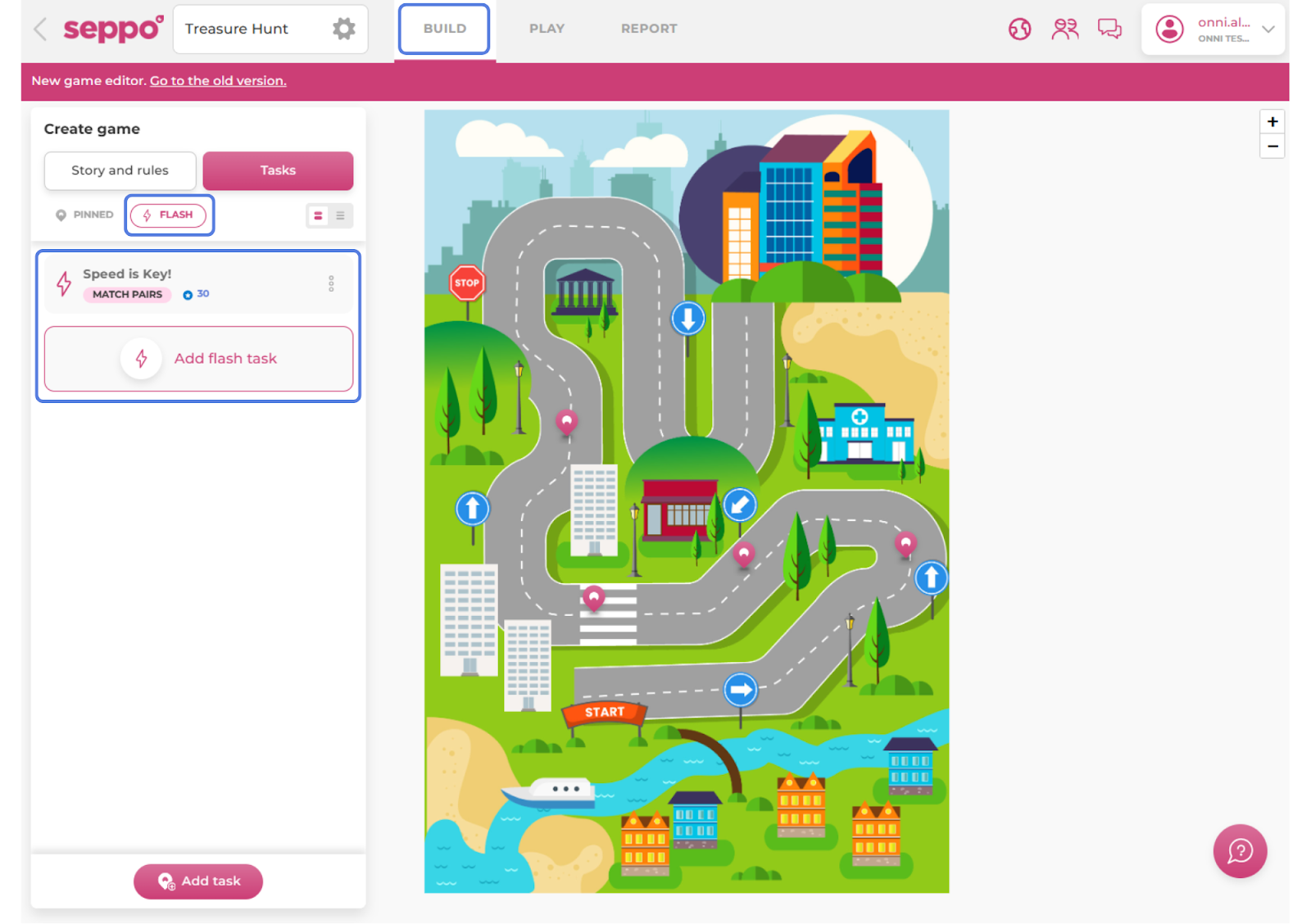
Once your game is under way, navigate to the Play tab. Here, under the “Tasks – Flash” section you can activate a flash task for the players. This is done by either pressing the lighting icon on the left or by the more menu on the right. A flash task can be deactivated the same way.
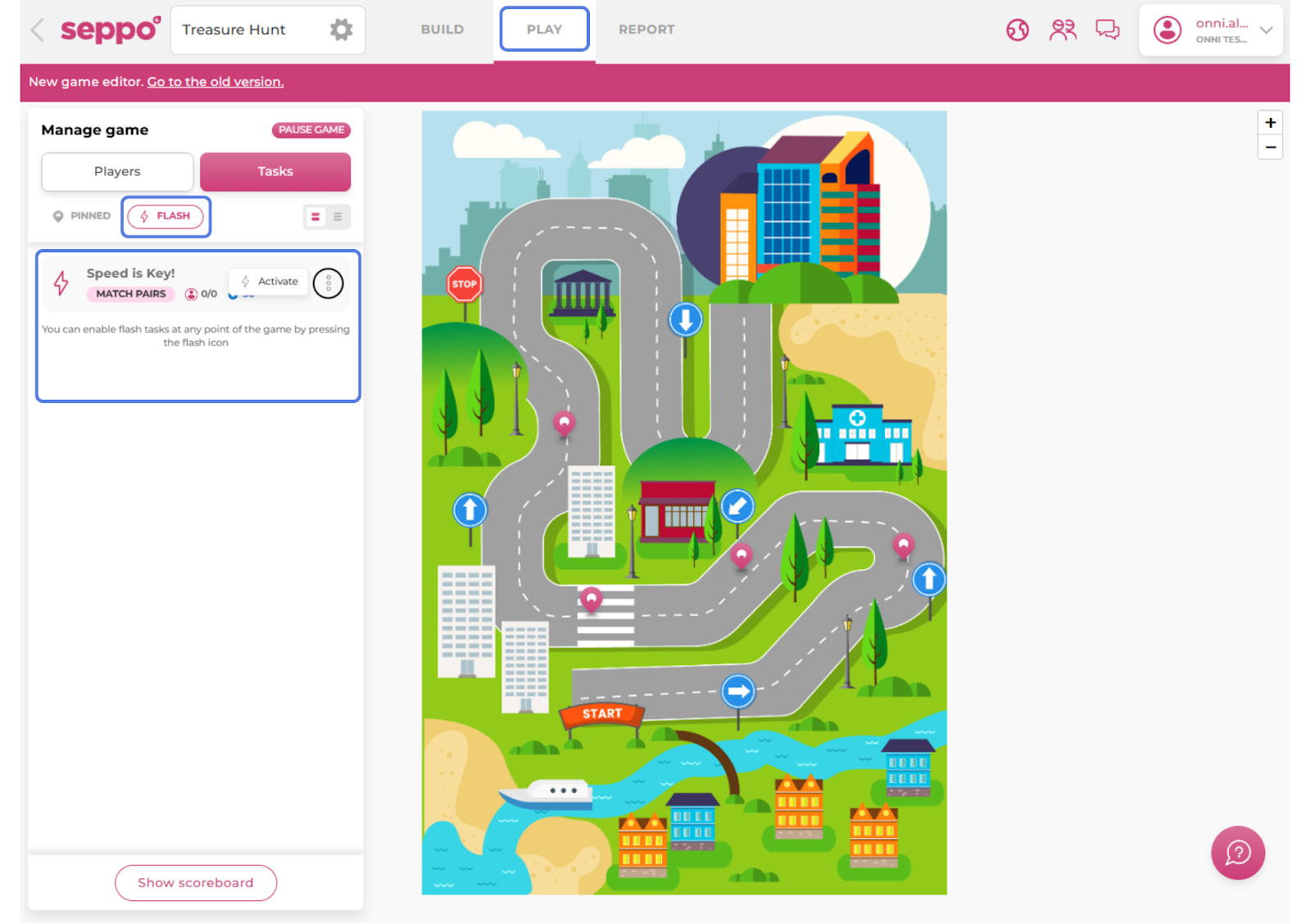
2. Send picture
The Send picture task setting requires players to submit a team selfie or another specified image as part of their answer.
3. Automatically award badge
With this setting, you can configure badges to be awarded automatically when a player’s answer meets the required point threshold.
💡 Note: Badges must first be enabled and added in the Game Settings.
To set it up:
Enable the setting on.
Select the badge you want to award for this task.
Define the point requirement needed to earn the badge.
Save your changes.
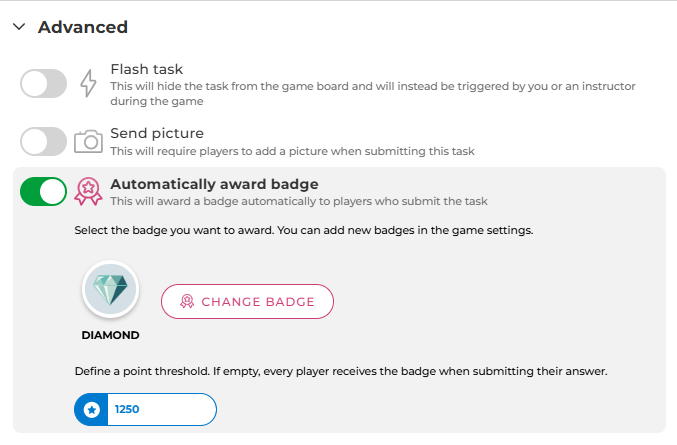
4. Time limit
The Time limit setting allows you to restrict the amount of time players have to complete a task. Once the time expires, players can no longer submit an answer.
However, instructors have the option to extend the time for a team by navigating to the Play tab and finding the time expired answer. From there, they can return the task to the player with additional time granted to complete it.
5. Code lock
The Code lock setting is a fun way of adding some mystery to a Seppo game. A task with the code lock enabled requires players to find out what combination of letters or numbers unlock the task. An instructor has the option to write a hint about the correct combination, such as a riddle or a question.
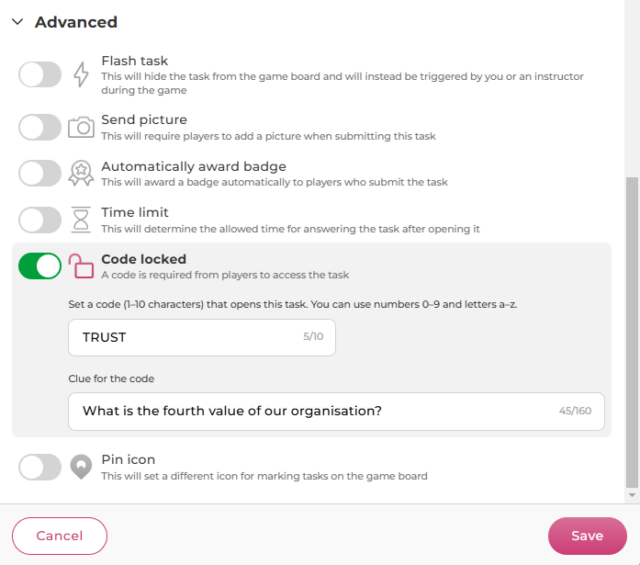
6. Pin Icon
With the Pin icon setting, you can customize the appearance of your task to better suit the context. Please note that certain tasks, such as those with a code or GPS lock, have their own predefined pin icons for clarity and cannot be overridden.
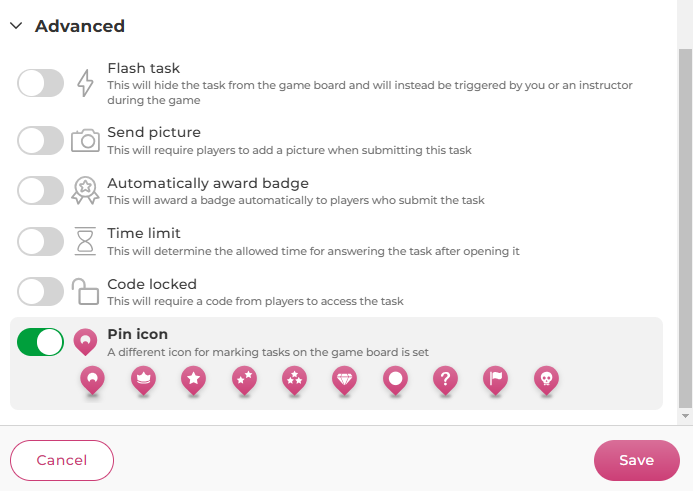
7. GPS lock
GPS location locked tasks can only be enabled in a live map game that has “Enable GPS positioning” game setting enabled. These tasks become available to players when they are within a specified proximity of the task’s location on the map. The available range options are 10, 20, and 50 meters.
Once the GPS location locked task setting is saved, the task pin icon will change to indicate that the task is locked.

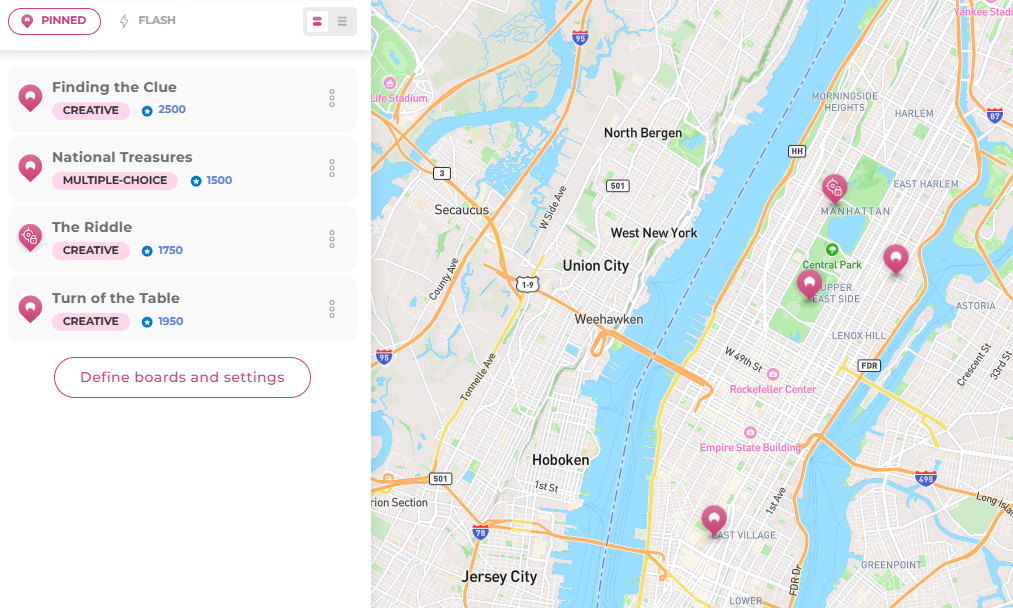
8. Hidden task
The Hidden task setting is only available in 360-degree image games. When enabled, the task pin becomes invisible on the game board. Players must explore the environment and tap or click the correct spot to reveal the task. It’s recommended to provide players with a hint about the game containing hidden tasks. For example, this can be done in the Story and Rules section of the game.

Keep in mind!
Advanced task settings are a great way to enhance your game! However, keep in mind that they can alter the game’s structure and functionality, so it’s recommended to test the game before playing.